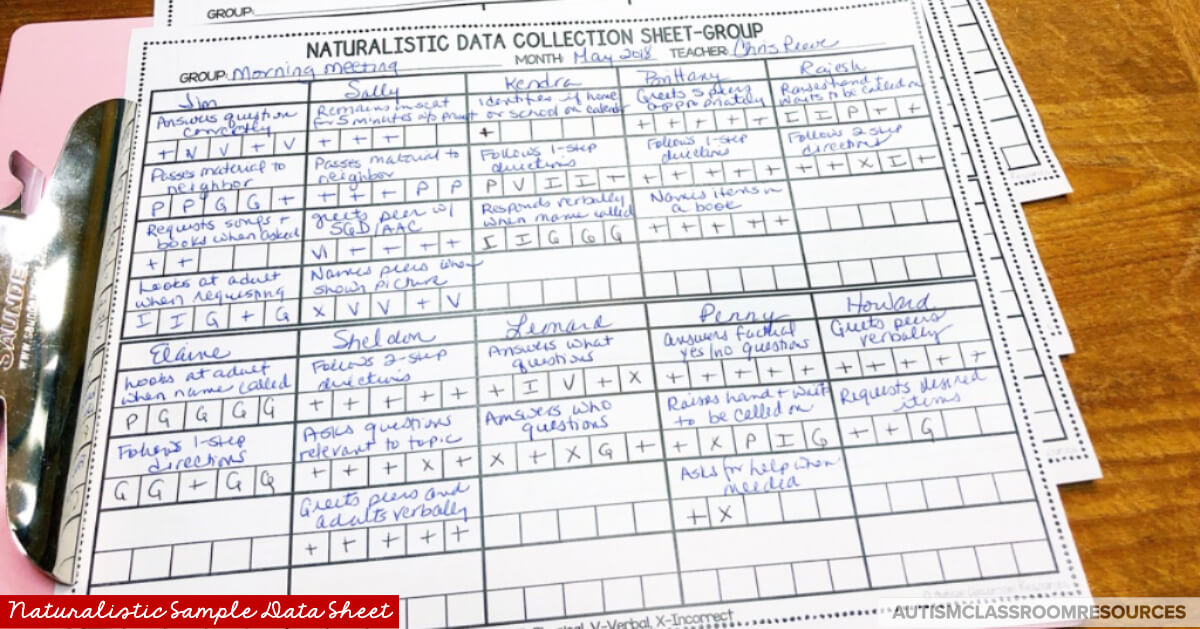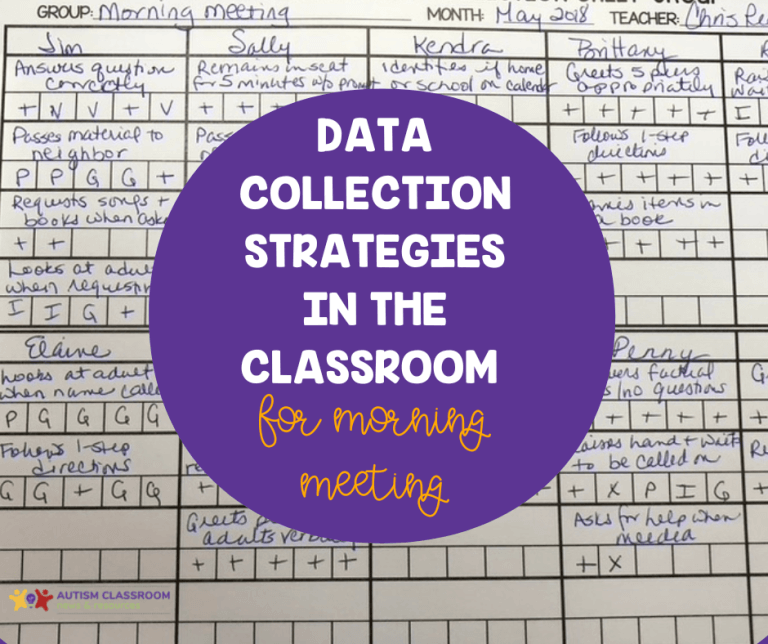Sharing is caring!

Looking for practical data sheets? Click the picture to grab these from my store.
When we hit testing and IEP season (the 5th season for the year), we start thinking about extended school year (ESY). But really, we should be thinking about ESY data throughout the year. For anyone not sure on what ESY is, it is when a school district provides services over breaks or summer to prevent regression or loss of skills that are critical to a student’s development. There are federal regulations outlining when it is required to provide ESY and each state has different approaches to it.
However, one of the things that is evaluated to determine ESY services is regression of skills that are not recouped within a certain time period after a vacation or holiday. Consequently, we need to make sure we have the data to make that decision.
One thing that you often (not always) have to show to qualify for ESY is regression of skills and inability to regain them within a reasonable time frame. It’s not the only measure that is used, but it a key one. Soooo, taking data during the year becomes really important to be able to determine if skills are lost over breaks.
But it doesn’t have to be overwhelming. Here are 3 easy things to do to make sure you have the ESY data you need.
1. Curriculum-based Assessments
Use your curriculum assessments. Examples of curriculum-based assessments (CBA) are the GPS if you use the Unique Learning System, the protocol assessment of the STAR, the ABLLS-R or the VB-MAPP or the Brigance.
Curriculum-based assessments can be done 3-4 times per year. I typically tell teachers to give the assessment at the beginning of the year. Another one just before winter break. Then before the winter break, do a quick reassess when kids come back from winter break. If the kids regress, track those skills until they recoup. Then do one more assessment at the end of the year. This way not only do you have data for instructional decisions, but you also have benchmarks you can use to look at regression.
2. Take Weekly Data During ESY
Given that ESY’s focus is either on maintaining skills and preventing regression or maintaining progress toward a critical life skill, take weekly data during the summer on the targeted skills. Many of you may work in districts where you have to choose skills to address in ESY. Or maybe you just focus on the whole IEP. Either way, give yourself some breathing room and take weekly assessments of the skills.
Unless you are working on ongoing skills and the student is struggling, weekly data will be sufficient to monitor most of the skills. If you see students start to regress, you might need more data if a student is still learning the skill. But typically weekly data would be fine to keep it in check. Something like the naturalistic data sheet works well for this and allows you have to multiple students on a page. And there is a free video tutorial in my TpT Store on Taking Sample Data. 
Looking for practical data sheets? Click the picture to grab these from my store.
3. Make Sure to Transfer the Data
Finally, you have to make sure you have solid data at the end of ESY to start the year. If you are the teacher, it will allow you to know how the student returned to school. If the student moves on to a different teacher, make sure to pass the data on.
This way, the teacher will know what skills the student lost between the end of ESY and the school year. Then you or the next teacher can pull that data out to make the decision about next year.
Have questions about taking data in ESY? Share them in our free Facebook group!
And if you are looking for more ideas on taking data effectively in the classroom without making yourself crazy, look no further than the Free Webinar on Setting Up Data Collection Systems.
Until next time,




![What you need to know to use rubrics for data collection. [Picture of a rubric]](https://autismclassroomresources.com/wp-content/uploads/2018/04/using-rubrics-for-data-collection.png)

